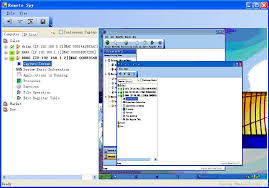
To effectively communicate, you have to get on the same page as the people to whom you deliver your message. If your writing is outside their technical knowledge zone, you lose them. We all use phrases and terms that others don’t understand. Minimize them in your writing, or make sure to explain them up front in a universal way that helps your readers know your meaning when you employ specific terms.
Our younger daughter often helps me with IT-related issues. I’m a baby boomer. I blog, tweet, use LinkedIn and Facebook regularly. I post, put up pictures, attach videos, know how to target messages to specific audiences. At the same time, I’m not an expert on social media, and still need to learn more. My daughter helps me during those times.
Often, she and I are not on the same page, and she whips through her explanations before I have time to cognitively absorb (or write down on paper) what she said. So I’m confused. She uses terms that I don’t know. If I ask her what she means, she goes through it so fast, that I nod my head like a dumbbell, pretending I absorbed what she said and can regurgitate it later. But that’s not the case.
We were looking to download an MP file recently. I couldn’t tell you what an MP file means. Several steps had to occur to save it, then for me to post it on social media for a client. My daughter rapidly clicked, moved and stored the file, putting it in a zip file, then hitting the “bar” icon, then storing to “downloads.” She explained what she did, but I didn’t know all the terminology and she moved too fast. We weren’t on the same page.
It’s important to always be aware of these types of situations in your communications. If you speak to an audience, ask questions and read their body language to ensure they get all the complicated phrases or subject matter you talk about. In your written communications, give simple explanations early so you can follow up with more complicated material. Don’t assume people know your subject.
Your communication effectiveness improves when you get on the same terminology page as your audience.
Our younger daughter often helps me with IT-related issues. I’m a baby boomer. I blog, tweet, use LinkedIn and Facebook regularly. I post, put up pictures, attach videos, know how to target messages to specific audiences. At the same time, I’m not an expert on social media, and still need to learn more. My daughter helps me during those times.
Often, she and I are not on the same page, and she whips through her explanations before I have time to cognitively absorb (or write down on paper) what she said. So I’m confused. She uses terms that I don’t know. If I ask her what she means, she goes through it so fast, that I nod my head like a dumbbell, pretending I absorbed what she said and can regurgitate it later. But that’s not the case.
We were looking to download an MP file recently. I couldn’t tell you what an MP file means. Several steps had to occur to save it, then for me to post it on social media for a client. My daughter rapidly clicked, moved and stored the file, putting it in a zip file, then hitting the “bar” icon, then storing to “downloads.” She explained what she did, but I didn’t know all the terminology and she moved too fast. We weren’t on the same page.
It’s important to always be aware of these types of situations in your communications. If you speak to an audience, ask questions and read their body language to ensure they get all the complicated phrases or subject matter you talk about. In your written communications, give simple explanations early so you can follow up with more complicated material. Don’t assume people know your subject.
Your communication effectiveness improves when you get on the same terminology page as your audience.